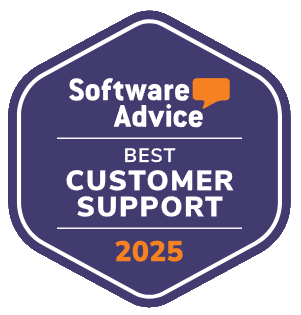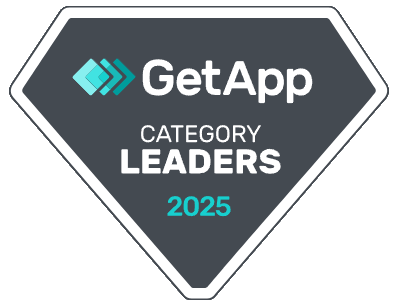Building strong customer relationships isn’t about a single moment—it’s about purposefully managing every stage of the customer journey.
Customer Lifecycle Management (CLM) offers a structured approach to engaging, retaining, and growing your customer base by aligning strategies with the full lifecycle, from first contact to brand advocacy.
In this guide, we’ll explain what CLM means, why it matters, the key stages to master, and how tools like Supportbench empower businesses to deliver consistent, personalized experiences across every phase.

What is Customer Lifecycle Management (CLM)?
Customer Lifecycle Management (CLM) refers to the strategic process of tracking, managing, and optimizing every phase of a customer’s journey with a brand. It encompasses everything from the first brand interaction to long-term loyalty and advocacy, ensuring that each stage is nurtured with tailored strategies and tools.
Unlike simple lead generation or reactive customer support, CLM is a holistic, proactive framework focused on the full customer journey. It aims to maximize customer retention, enhance customer satisfaction, and increase Customer Lifetime Value (CLV) by delivering relevant experiences at the right time.
Modern CLM strategies increasingly leverage AI-driven solutions, dynamic SLA management, and integrated communication platforms to manage interactions intelligently and at scale.
Why Customer Lifecycle Management (CLM) Is Critical for Modern Businesses
In a competitive market, reactive customer relationship management is no longer enough. Businesses that adopt structured Customer Lifecycle Management (CLM) frameworks achieve stronger acquisition rates, better retention, and long-term customer loyalty.
Here’s why CLM is essential for modern growth:
Enhancing Customer Retention and Loyalty
Effective lifecycle management focuses heavily on customer retention, ensuring existing customers stay engaged, satisfied, and loyal. Since acquiring a new customer is far more expensive than retaining an existing one, CLM strategies deliver significant cost efficiency and revenue stability.
Maximizing Customer Lifetime Value
When businesses actively guide customers through every lifecycle stage — Awareness, Consideration, Conversion, Retention, and Advocacy — they unlock higher Customer Lifetime Value (CLV). Strategic touchpoints, personalized support, and targeted upsell opportunities extend relationships and increase revenue per customer.
Improving Customer Satisfaction Through Proactive Support
Strong CLM frameworks emphasize proactive service and personalized experiences, directly improving customer satisfaction. Platforms offering AI-driven customer support solutions and dynamic SLA management ensure customer needs are addressed swiftly and intelligently, boosting loyalty and positive sentiment.

Creating Competitive Advantage with Personalization
With tools like customizable customer portals and multi-channel communication strategies, businesses deliver seamless, personalized experiences across touchpoints. This differentiation reinforces brand loyalty and positions companies for stronger long-term success.
The 5 Key Stages of Customer Lifecycle Management (CLM)
Effective Customer Lifecycle Management (CLM) focuses on understanding and optimizing every phase of the customer journey. Each stage requires specific strategies, tools, and approaches to maximize engagement and build long-term success.
Here’s how the lifecycle typically unfolds:
Awareness
At this initial stage, potential customers first discover your brand. Marketing efforts like content marketing, SEO, and paid advertising drive visibility. Multi-channel communication strategies such as social media, email, and live chat ensure prospects encounter your brand across different touchpoints.
Consideration
Once aware, prospects enter the consideration phase, evaluating your offerings against competitors. They engage with product demos, read reviews, and explore educational content. Personalized nurturing through email automation, live chat support, and webinars becomes critical to guide informed decisions.
Conversion
In the conversion stage, prospects become paying customers. Seamless onboarding, flexible pricing options, and a frictionless purchase experience are crucial here. Fast, responsive support backed by a strong knowledge base helps customers get started successfully.
Retention
Post-purchase, the focus shifts to building lasting loyalty. Strategies like proactive check-ins, loyalty programs, and personalized support pathways keep customers engaged and satisfied, reducing churn risks.
Advocacy
Customers who consistently experience value move into the advocacy stage. They refer others, leave positive reviews, and organically promote your brand. Encouraging feedback, offering referral incentives, and celebrating loyal customers are key to cultivating brand ambassadors.
How does CLM differ from CRM?
While often discussed together, CLM vs. CRM highlights two distinct approaches to managing customer relationships. Understanding their differences is essential for building a strategy that drives long-term growth, not just short-term engagement.
CRM vs. CLM: Quick Comparison | ||
| Feature | CRM (Customer Relationship Management) | CLM (Customer Lifecycle Management) |
| Primary Focus | Managing Customer Data And Interactions | Managing The Entire Customer Journey |
| Core Purpose | Organize Contacts And Track Communications | Optimize Customer Experience Across Stages |
| Key Activities | Lead Tracking, Sales Pipelines, Support Tickets | Journey Mapping, Engagement Personalization |
| Approach | Transactional And Reactive | Strategic And Proactive |
| Technology Use | Centralized Data Storage | AI, Automation, And Predictive Insights |
| Lifecycle Stage Coverage | Primarily Post-Sale Management | Full Lifecycle: Awareness To Advocacy |
| Impact Area | Sales And Support Teams | Company-Wide Alignment: Sales, Support, Marketing |
| Goal | Manage Relationships Efficiently | Maximize Customer Satisfaction And Loyalty |
What is CRM?
Customer Relationship Management (CRM) systems help businesses track individual interactions, manage sales pipelines, and organize customer information. CRM focuses on capturing and managing conversations, transactions, and support records, ensuring nothing falls through the cracks at the account level.
What is CLM?
Customer Lifecycle Management (CLM) offers a broader, more strategic perspective. Rather than managing single interactions, CLM focuses on nurturing customers across the full journey, starting with Awareness and moving through Consideration, Conversion, Retention, and Advocacy.
Modern platforms that embed the role of AI and automation in CLM enable teams to anticipate customer needs, personalize engagement, and streamline support dynamically based on the lifecycle stage, not just record activity.
In short, CRM systems are essential for organizing information. Still, without a strategic Customer Lifecycle Management (CLM) layer, businesses risk treating customers as isolated transactions instead of long-term partners.
How to Implement Customer Lifecycle Management Successfully
Successful Customer Lifecycle Management (CLM) requires more than just tracking customer stages. It demands strategic coordination, the right technologies, and a customer-first mindset across the entire organization.
Here’s how to implement CLM effectively:
1. Map and Understand the Full Customer Journey
Start by clearly outlining each stage of your customer lifecycle, from Awareness through Advocacy. Identify key touchpoints, decision moments, and potential friction areas where support, engagement, or education can make a difference.
2. Strengthen Self-Service with a Comprehensive Knowledge Base
Equip customers to succeed independently by building a comprehensive knowledge base that covers onboarding, troubleshooting, and product education. A well-organized knowledge base reduces support volume, speeds up problem-solving, and empowers users throughout every lifecycle stage.
3. Automate Proactive Support with Dynamic SLAs
Timely responses and personalized support are critical at every stage of the lifecycle. Implementing dynamic SLA management ensures service levels automatically adapt based on customer value, lifecycle stage, or escalation urgency, keeping satisfaction high without overwhelming support teams.

4. Use Data and AI to Personalize Interactions
Data-driven personalization allows you to predict customer needs and proactively deliver value. AI-powered tools can automate outreach, flag churn risks, and identify upsell opportunities based on behaviour signals, not just demographics.
5. Align Teams Around the Customer Lifecycle
Marketing, sales, support, and product teams must share a unified view of the customer journey. Regularly update internal playbooks, training materials, and KPIs to reflect lifecycle strategies, ensuring all departments align on customer success rather than operating in silos.
How AI and Automation Are Transforming Customer Lifecycle Management
CLM has evolved significantly with the introduction of AI and automation, allowing businesses to deliver smarter, faster, and more personalized experiences throughout the customer journey.
Here’s how AI-driven solutions are reshaping CLM:
Predicting Customer Behaviour and Needs
AI models analyze historical and real-time data to predict customer actions, such as likelihood to convert, potential churn risks, or readiness for upsell opportunities. This allows businesses to act proactively, not reactively, across the lifecycle.
Automating Personalized Engagement
Rather than relying solely on broad email campaigns or static nurturing flows, AI can trigger customized messages, support prompts, and onboarding experiences based on live customer behaviour. Personalized touchpoints improve customer satisfaction and drive higher engagement rates.
Optimizing Support Workflows with Dynamic SLAs
With dynamic SLA management, AI can prioritize service requests automatically based on customer value, lifecycle stage, or urgency, ensuring top-tier customers receive rapid, tailored support without manual triage.
Improving Self-Service with Intelligent Knowledge Bases
AI enables smarter search functionality and content recommendations within knowledge bases. Customers quickly find the answers they need, reducing dependency on human agents and speeding up the resolution process.
Delivering Real-Time Insights to Customer-Facing Teams
AI-driven dashboards and predictive analytics surface key lifecycle trends, allowing marketing, sales, and support teams to make data-informed decisions faster and continuously refine their lifecycle strategies for better outcomes.

Challenges in Customer Lifecycle Management and How to Solve Them
Even with a strong CLM strategy, many businesses face common hurdles when implementing it effectively. Recognizing these challenges early can help improve your approach and ensure better results across the customer lifecycle.
Here are the most common hurdles and solutions:
Siloed Data Across Departments
When marketing, sales, and support teams use disconnected systems, tracking the full customer journey becomes difficult. This leads to fragmented experiences and missed opportunities.
Solution: Implement a unified platform consolidating multi-channel communication strategies, CRM records, support histories, and engagement metrics into a centralized view. This allows all teams to align around the same customer data, leading to a more cohesive customer experience.
Inconsistent Engagement Across Lifecycle Stages
Some businesses focus heavily on acquisition but neglect post-conversion engagement. Without consistent value delivery during retention and advocacy stages, churn rates increase.
Solution: Create targeted playbooks and automation rules for each stage. Use AI-driven customer support solutions to trigger personalized outreach, proactive support, and loyalty programs.
Lack of Automation and Personalization
Manual processes make it hard to scale personalized experiences across a growing customer base. Customers today expect timely, relevant interactions, not generic messaging.
Solution: Integrate AI and automation into your lifecycle workflows, including dynamic SLA management, intelligent ticket routing, and personalized content delivery based on behaviour and lifecycle position.
Poor Measurement of Lifecycle KPIs
You can’t measure or improve lifecycle performance without clear KPIs tied to lifecycle stages, such as churn rates, customer satisfaction scores, or upsell conversion.
Solution: Build a reporting framework that tracks lifecycle-specific metrics, not just broad performance data. Regularly analyze customer behaviour at each stage to optimize engagement and retention efforts.

Supportbench: Your Complete Solution for CLM Success
To manage the customer journey effectively, businesses need integrated tools that personalize engagement and automate workflows. Supportbench offers scalable and proactive Customer Lifecycle Management (CLM) solutions designed to support businesses through every stage of the lifecycle.
Here’s how Supportbench helps bring CLM strategies to life:
AI-Driven Customer Support Tools
Supportbench uses AI to analyze interactions, predict customer needs, and automate smart ticket triage. This ensures faster resolutions, proactive outreach, and high customer satisfaction throughout the entire lifecycle, from onboarding through renewal.
Dynamic SLA Management
With dynamic SLA management, Supportbench automatically prioritizes service levels based on customer profile, lifecycle stage, and urgency. This guarantees high-value customers receive faster, more personalized support without overwhelming frontline teams.
Comprehensive Knowledge Base Solutions
Supportbench enables organizations to build a comprehensive knowledge base that evolves alongside customer needs. Self-service portals and smart content recommendations help customers resolve issues independently, boosting retention and reducing support load.
Customizable Customer Portals
Every customer journey is unique. Supportbench offers customizable customer portals where users can track tickets, access tailored resources, and engage with support teams seamlessly, ensuring a personalized experience at every touchpoint.
Multi-Channel Communication Integration
Supportbench connects email, chat, phone, and self-service portals into a unified platform. Businesses deliver consistent, relevant experiences across every lifecycle stage through multi-channel communication integration, enhancing engagement and loyalty.
With Supportbench, Customer Lifecycle Management is no longer reactive or fragmented; it becomes a strategic advantage that drives retention, satisfaction, and long-term growth.
Conclusion
Mastering Customer Lifecycle Management (CLM) isn’t about isolated tactics — it’s about creating a connected, customer-centric experience from first contact to loyal advocacy. With the right strategies and solutions, businesses can automate smarter engagement, personalize support, and build lasting customer relationships that fuel growth.
With tools like Supportbench, businesses can ensure their CLM strategies are not only proactive but also scalable and efficient. From AI-driven customer support to dynamic SLA management and customizable portals, Supportbench provides the complete solution needed to manage the entire customer journey successfully.
By adopting CLM, companies can unlock higher customer retention, increase Customer Lifetime Value (CLV), and gain a competitive edge in today’s fast-paced market. The result? Stronger customer relationships, improved satisfaction, and long-term business growth.















